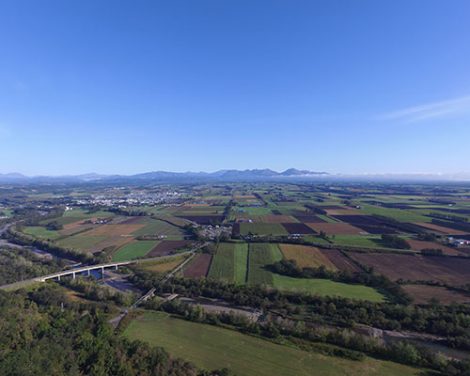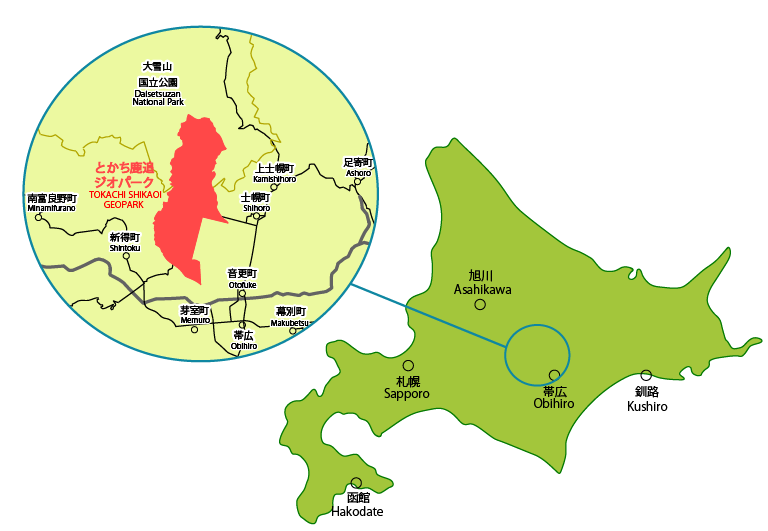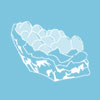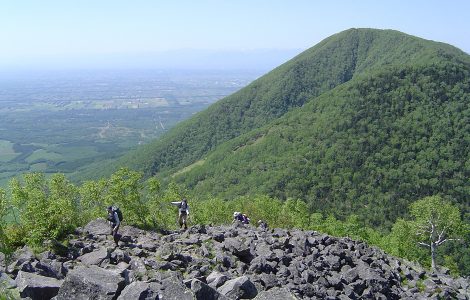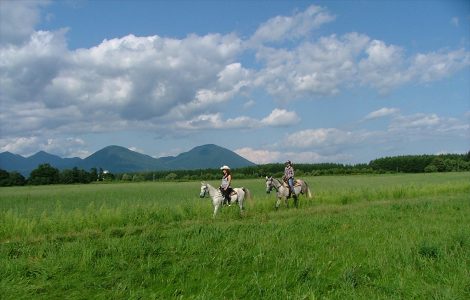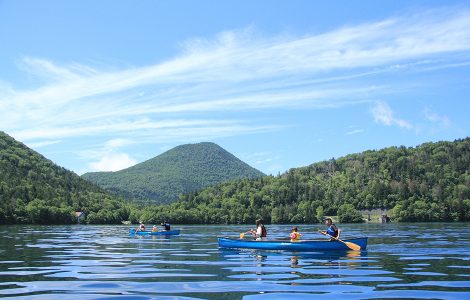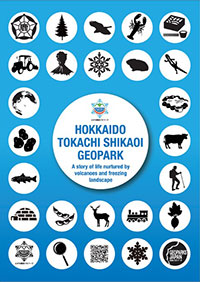Volcanic activity long ago
The mountains around Lake Shikaribetsu were created by volcanic activity in the past, and are called the Shikaribetsu Volcano Group.
The land of Shikaoi was created by the repeated volcanic activity and the action of rivers about one million to ten thousand years ago.
The Shikaribetsu Volcanic Group is dome-shaped volcanoes made of sticky lava.
The mountains of the Shikaribetsu Volcanoes have a unique topography with large rocks stacked on top of each other.
Lake Shikaribetsu was created when a river was blocked by volcanic activity.
From the sky on the northern shore of Lake Shikaribetsu, you can see how the lake was formed.
Lake Shikaribetsu, which was formed by the damming of a river, is home to an endemic species of Miyabe char.
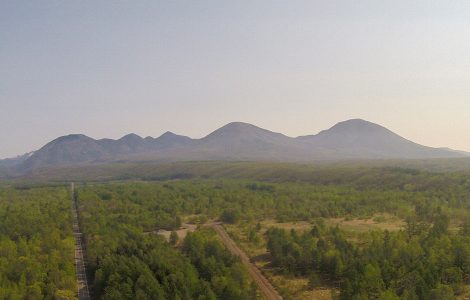
Shikaribetsu Volcano Group
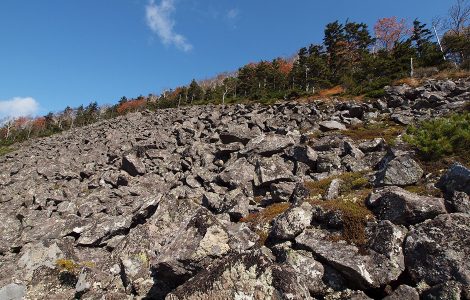
Senjokuzure Block Slope
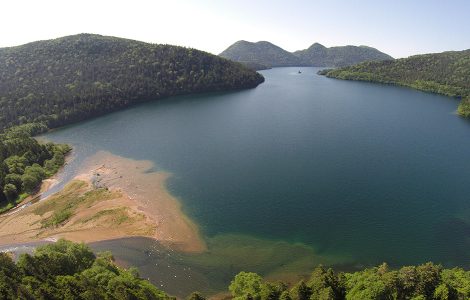
Estuary of the Yanbetsu River,North of Lake Shikaribetsu
A story of the frozen land
Shibare is a Hokkaido dialect word that describes the freezing cold. The cold climate that has persisted since the past has brought a variety of landforms and rich ecosystems to the land of Shikaoi.
Wind tunnels that trapped the winter cold
Around Lake Shikaribetsu is home to one of the largest wind tunnel areas in Japan.
Permafrost containing ice from 4,000 years ago, the oldest in Japan, was found underneath the wind tunnel area in 2008.
The cold, moist environment around the wind tunnel has nurtured a forest similar to that of the Arctic Circle.
At Mt.Higashi-Nupukaushinupuri, you can see the wind tunnel and its characteristic vegetation while hiking.
Enjoy freezing in the ice world
Lake Shikaribetsu is at a high altitude and is surrounded by mountains, so the cold air tends to accumulate.
In winter, when the lake surface is completely frozen over, a group of buildings made of snow and ice called “Lake Shikaribetsu Kotan” appears for a limited time.
At Lake Shikaribetsu Kotan, you can enjoy the freezing world with ice bars and open-air baths on the ice.
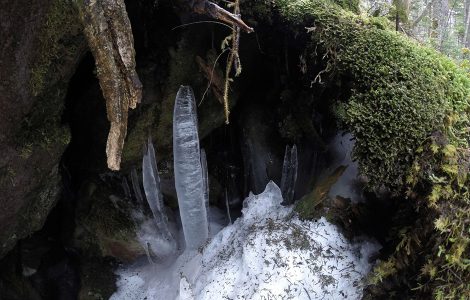
A wind Tunnel
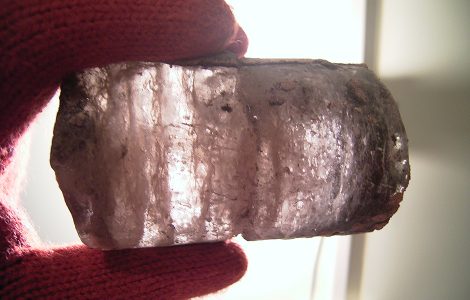
Ice from about 4000 years ago

Lake Shikaribetsu Kotan
※Kotan means village in Ainu language
The nature and land of Shikaoi Nurtures life
In the area of Tokachi Shikaoi Geopark, there is an untouched natural environment in the mountainous areas and a lot of life in the cultivated field and dairy areas on the plains.
Life nurtured by a unique natural environment
Around Lake Shikaribetsu, with its rugged rocks and wind tunnels that blow cold winds even in summer, is home to Ezonakiusagi,an endemic subspecies of northern pika, which is said to be a survivor of the Ice Age.
Lake Shikaribetsu is also home to Miyabe char, a uniquely evolved subspecies of Oshorokoma. The habitat of Miyabe char has been designated as a natural monument of Hokkaido.
Life nurtured by volcanic ash earth
The soil in the fields of Shikaoi Town is Kuroboku soil, which is based on volcanic ash.
Kuroboku soil accounts for 47% of the soil in Japan, but it is a rare in the world, accounting for less than 1%. It is a soil unique to Japan, a country of volcanoes.It can be said that the soil is unique to Japan, a volcanic powerhouse.
In Shikaoi Town, crops that match the characteristics of the soil and the climate are grown, and typical examples are potatoes, sugar beet, beans, and wheat. There are many restaurants and specialty shops in the town that use these local ingredients.
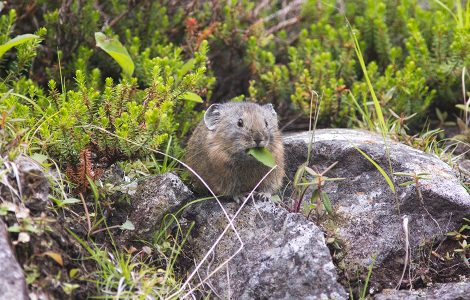
Ezonakiusagi
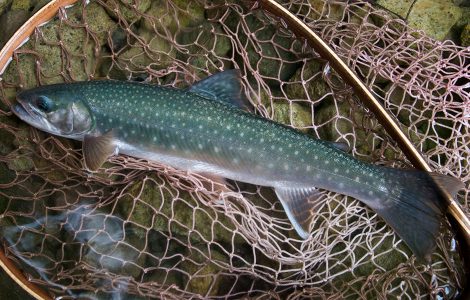
Miyabe char
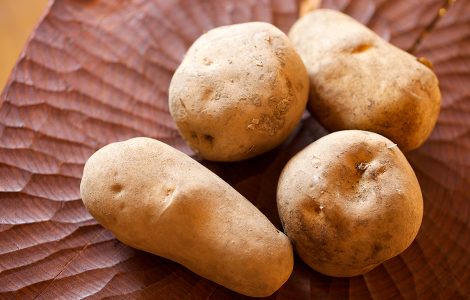
Potatoes grown in Shikaoi Town
